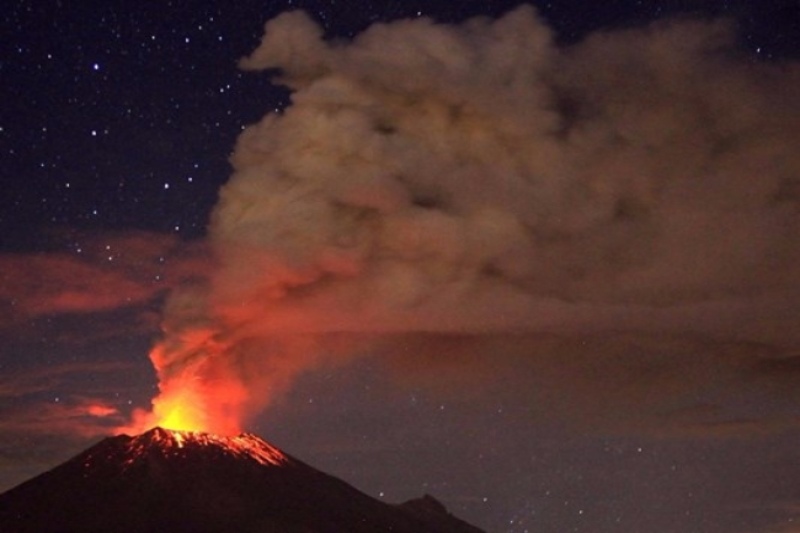One Day, the Most Deadly Active Volcano in Mexico Explodes Thirteen Times

Thirteen times in the last day, Mexico’s most hazardous active volcano erupted, sending smoke and ash columns skyward. Officials have issued a warning to the public not to climb the volcano due to the volcanic activity that is causing aviation disruptions in the vicinity.
Approximately 45 miles (72 kilometers) southeast of Mexico City, in central Mexico, is Popocatépetl, or “smoking mountain” in Aztec Nahuatl. Thick ash plumes have been engulfing the capital and its environs since Tuesday, February 27.
For the past 500,000 years, Popocatépetl has alternated between active and dormant phases; its most recent significant eruption occurred over a millennium ago. In 1994, the current active phase got underway.
Residents within a 60-mile (96-kilometer) radius of the volcano, home to around 25 million people, are not thought to be in imminent danger from the eruptions as long as they keep their distance, according to officials monitoring the volcano’s activity.
Related: “Going overnight in Grindavík is not very wise”: Icelandic volcano prepares for another outburst
“Do not try to climb the volcano, as explosions occur that throw incandescent fragments, as has been seen recently. Respect the exclusion radius of 12 kilometers [7.5 miles] from the crater, being within this area is not safe. In case of heavy rain, stay away from the bottom of ravines due to the danger of mud and debris flows,” Mexico’s National Center for the Prevention of Disasters (CENAPRED) wrote in a translated alert on Tuesday (Feb 27.).
At least 22 flights were canceled as a result of part of this ash being discovered inside aircraft at Mexico City’s Benito Juárez International Airport, according to airport officials. Puebla International Airport, which is close to the volcano, has also been temporarily closed due to the ash cloud. Airport officials issued a warning on Wednesday, February 28, stating that “operations could be suspended” if the plumes persist.
Because volcanic ash drastically limits visibility and can wear jet engine blades due to its abrasive texture, it poses a threat to aviation safety. Furthermore, if ash particles come into touch with the engine’s combustion chamber, they may melt and turn sticky.
“Airborne volcanic ash can be a serious hazard to aviation even hundreds of miles from an eruption,” the American Geosciences Institute wrote. “When ingested into a jet engine, volcanic ash erodes turbine blades, and the melted ash can adhere to critical parts, causing engine failure.”